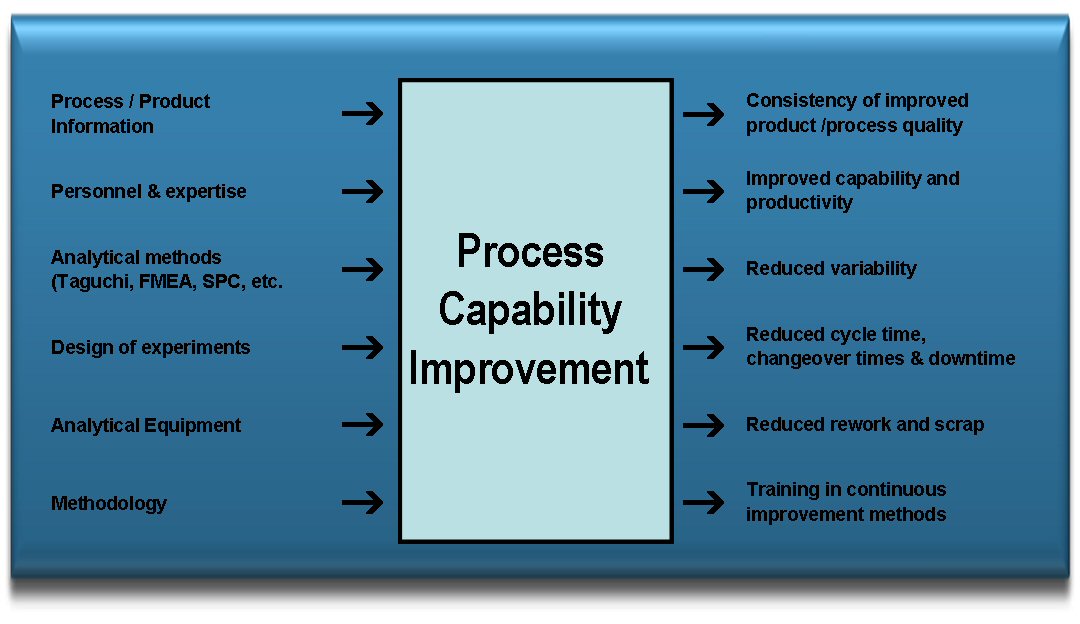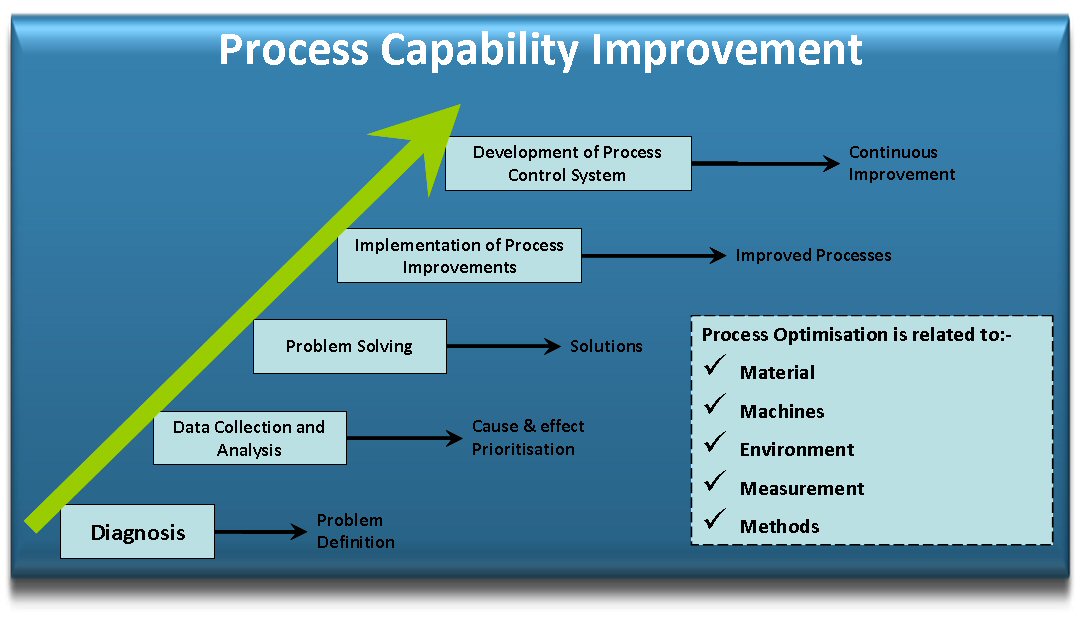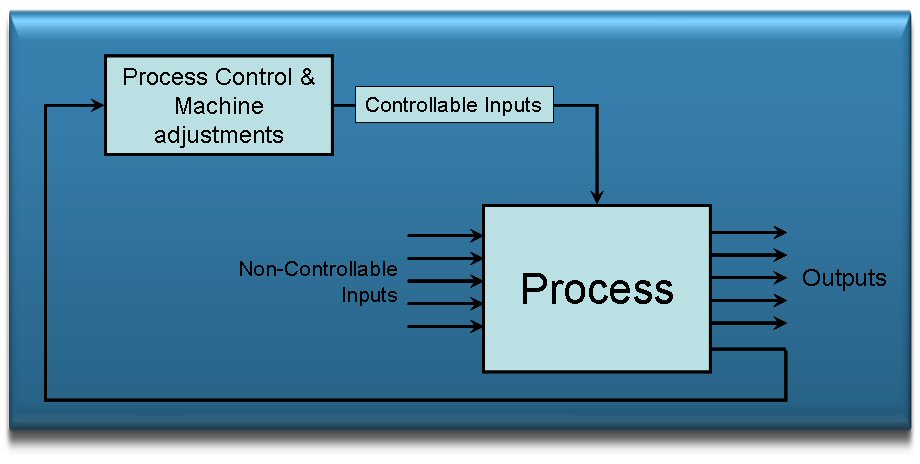4.14 - Process Capability Improvement
Overview
The successful implementation of JIT (see guide 5.05) depends on the processes being reliable and capable. Process Capability Improvement supports this through a systematic approach aimed at increasing the productivity of a manufacturing process (processes include the machine shop, the assembly, shop heat treatment etc) while delivering a product of consistent quality at the lowest possible cost.

A flowchart may be used to show the five key elements of the structured approach to Process Capability Improvement

Diagnosis
A process diagnosis is a systematic approach to problem definition. It covers the areas of quality, cost & capability and enables deviations from the process performance requirements to be indentified.
Data Collection and Analysis
Data must be collected and analysed in order to understand the problems in more detail. The order in which the problems are addressed is determined by prioritising the work in terms of the greatest potential benefits.
To improve the performance of a process it is necessary to understand its requirements in terms of the critical output parameters and to determine which inputs parameters influence them. An FMEA analysis can give a deeper knowledge of a process, its products and problems (see guide 5.30). Process Capability Studies (see guide 4.15) are used to sample data to build up a statistical picture of processes. Comparing this information with the desired product tolerances then shows whether effective process control is being achieved for the critical output parameters.
Problem Solving
When the process input parameters have been determined, those with an important influence are identified using appropriate problem solving techniques. The process must then be optimised so that it produces the product to specification at lowest possible cost. This is achieved by either adjusting important input parameters or by reducing their influence on the process. Several experimental analytical techniques are used for this purpose, for example, Taguchi (see guide 6.06).
Implementation of Process Control Improvements
Implementation of the optimised operating conditions and the measurement of performance of the improved process needs to be supported by new documentation and training of operators and staff.
Development of Process Control System
Processes need to be controlled to ensure that they remain capable and cost effective. Quality, cost and productivity control systems can be established in the workplace to ensure that these criteria are visible and acted upon swiftly. Statistical Process Control (SPC) and pre-control are examples of systems that may be used.
